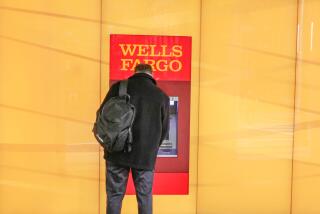Blacks Rejected More Often Than Whites for Home Loans, Survey Shows
- Share via
ATLANTA — Blacks are rejected more than twice as often as whites when applying for home loans with the worst record of potential discrimination found in the Plains and the best in the Northeast, a newspaper survey said Sunday.
The Atlanta Journal-Constitution said an analysis of $1 trillion in loan requests made in the 1980s shows the rejection rate for applicants nationwide was 11.1% for whites, 12.2% for Asians, 16.5% for American Indians, 18.2% for Hispanics and 23.7% for blacks.
The survey represents a review of 10 million loan applications submitted between 1983 and mid-1988 at the nation’s 3,100 savings and loans associations and mutual savings banks. The institutions provide 50% of America’s home loans, the newspaper said.
The loan statistics obtained from the Federal Home Loan Bank Board do not by themselves prove discrimination, observers said, since they reveal nothing about the debt burdens or credit histories of applicants.
But Home Loan Bank Board regulations say statistical disparities should be examined for clues to prejudice in loaning.
“On the face of it, it looks like what you have there is a great big red flag,” said Jerauld C. Kluckman, director of compliance programs for the board. The board agreed to collect the information 10 years ago as part of a civil rights suit settlement. The federal agency has complied, but never analyzed the figures, the newspaper said.
The survey shows that besides being rejected more than twice as often as whites, blacks withdraw applications 21% more often and receive no decision on loan applications 23% more often.
The survey showed the black-white disparity in rejection rates was widest in the Plains, with 30.9% for blacks compared to 12.6% for whites. In the Midwest, 29.6% of black applicants were rejected compared to 12.2% for whites, the study said.
The gap was slightly narrower in the South, with 24.1% of blacks turned down compared to 10.2% for whites.
The differences were lower in the West, with a 25.1% rejection rate for blacks and 14.4% for whites, and in the Northeast with a 13.4% to 9.1% black-white rejection ratio.
Throughout the country, high-income blacks were rejected more often than low-income whites in 85 of the 100 largest metropolitan areas in at least one of the past five years. In 35 of the 100 areas, high-income blacks were rejected more often than low-income whites in at least three of the five years.
Industry officials said they were surprised by the disparities.
“Perhaps we need to have our research department do a little research on that and see if we can’t come up with some reasons,” said Barney Beeksma, chairman of the U.S. League of Savings Institutions, an industry trade association. “When you look at 23.7% rejected for blacks and 11.1% for whites, you’re dealing with a number twice as large. That’s troubling.”
The newspaper suggests that the denial of loans because of race in an area--a practice known as redlining--may have grown worse in the 1980s as federal regulators decreased enforcement of fair-lending laws.
Civil rights activists point to several indicators that the Reagan Administration weakened the regulatory system built up in the 1960s and 1970s to stop redlining.
Bank regulators reduced the number of examiner hours devoted to consumer regulations, including fair-lending laws, by 74% from 1981 to 1984, the newspaper said.
The Justice Department’s Civil Rights Division has reduced the number of attorneys and staff dealing with credit cases, and the Department of Housing and Urban Development quit collecting data on the location of FHA loans.
The regulators have had something of an alibi in the ongoing crisis regarding the safety of banking institutions, particularly savings and loans, they said.
“I regret to report that, as a result of this situation, we did not allocate sufficient resources to the enforcement of . . . consumer-related issues,” M. Danny Wall, chairman of the Bank Board, testified in March to the Senate Banking, Housing and Urban Affairs Committee. “The Bank Board has recently increased its activity in the area . . . after a long lull. There is still much work to be done.”
More to Read
Sign up for Essential California
The most important California stories and recommendations in your inbox every morning.
You may occasionally receive promotional content from the Los Angeles Times.











